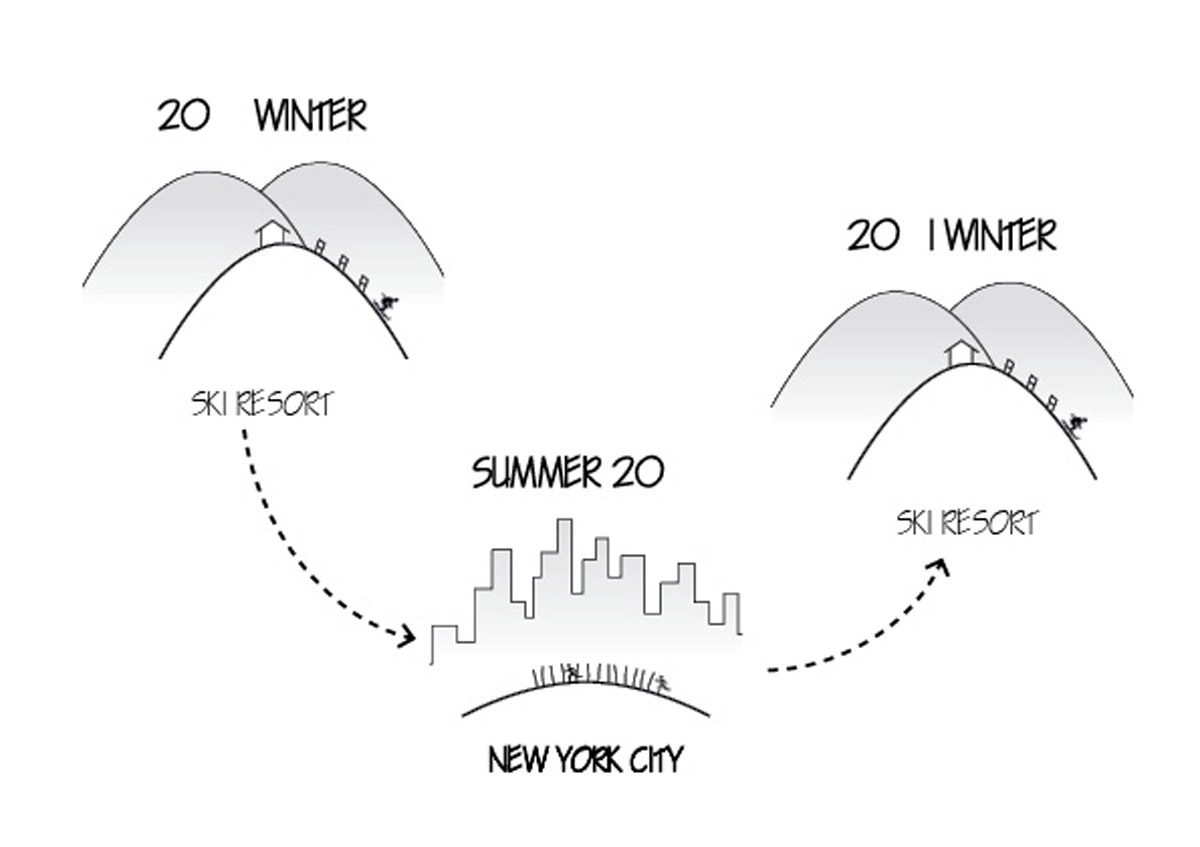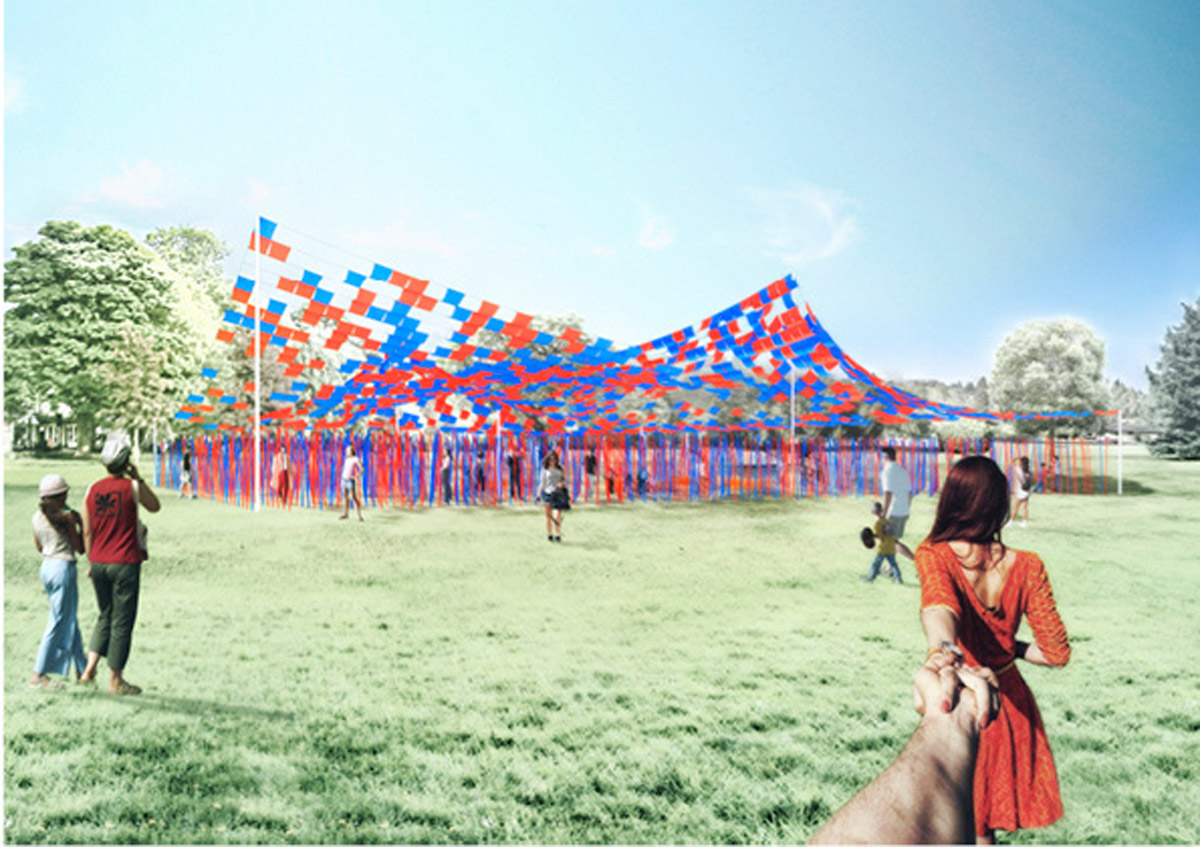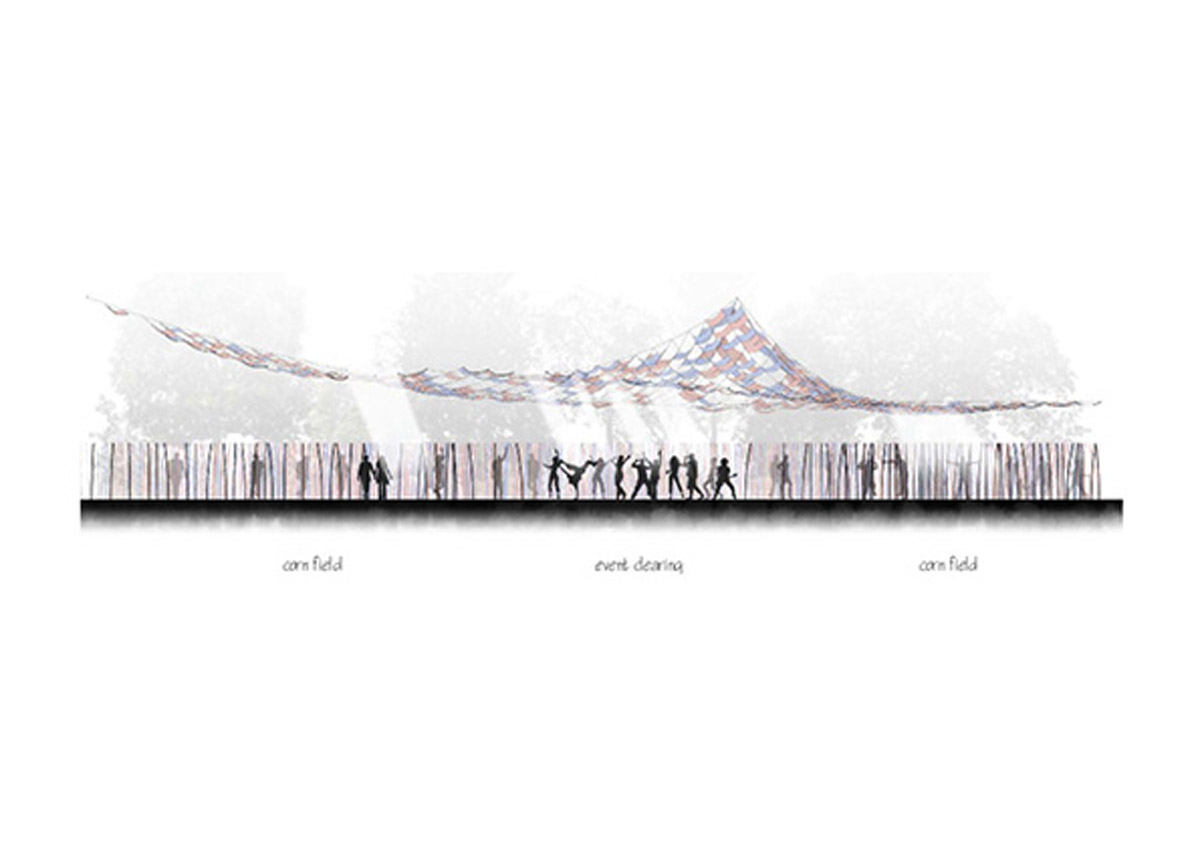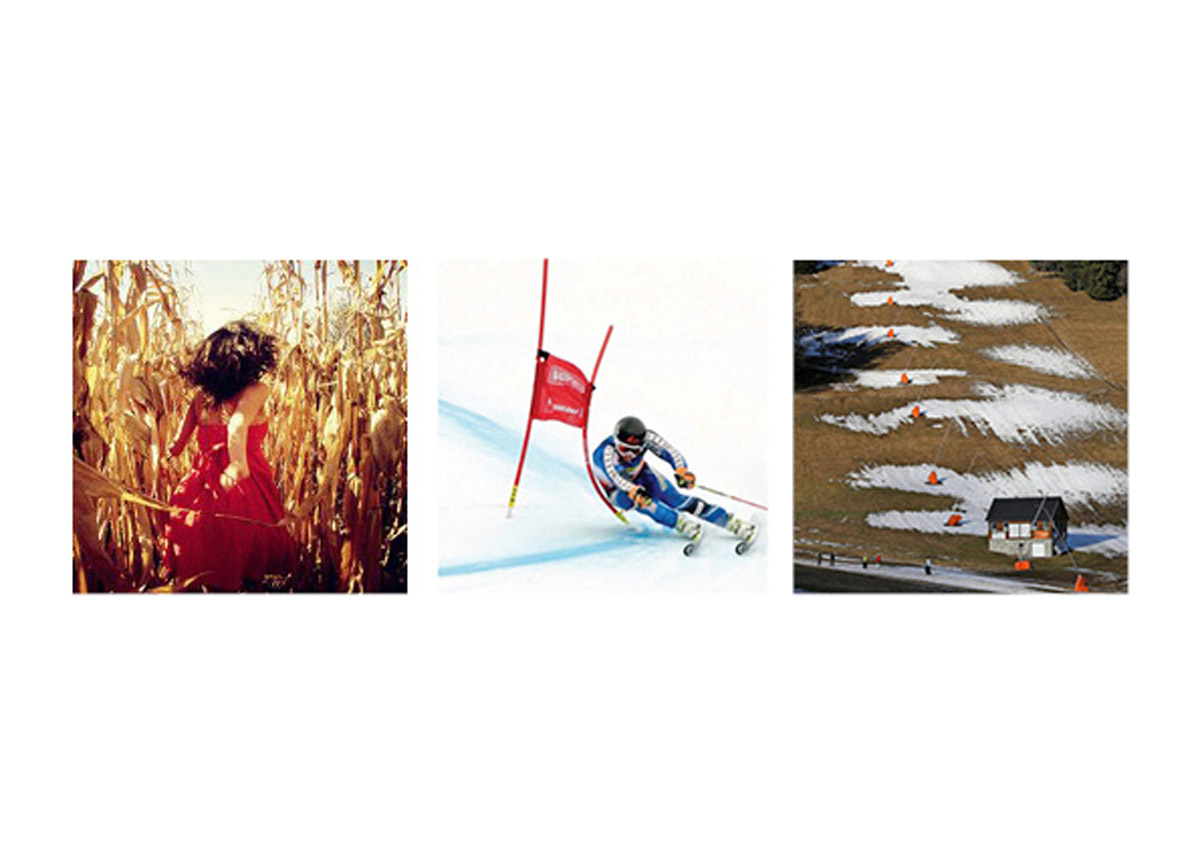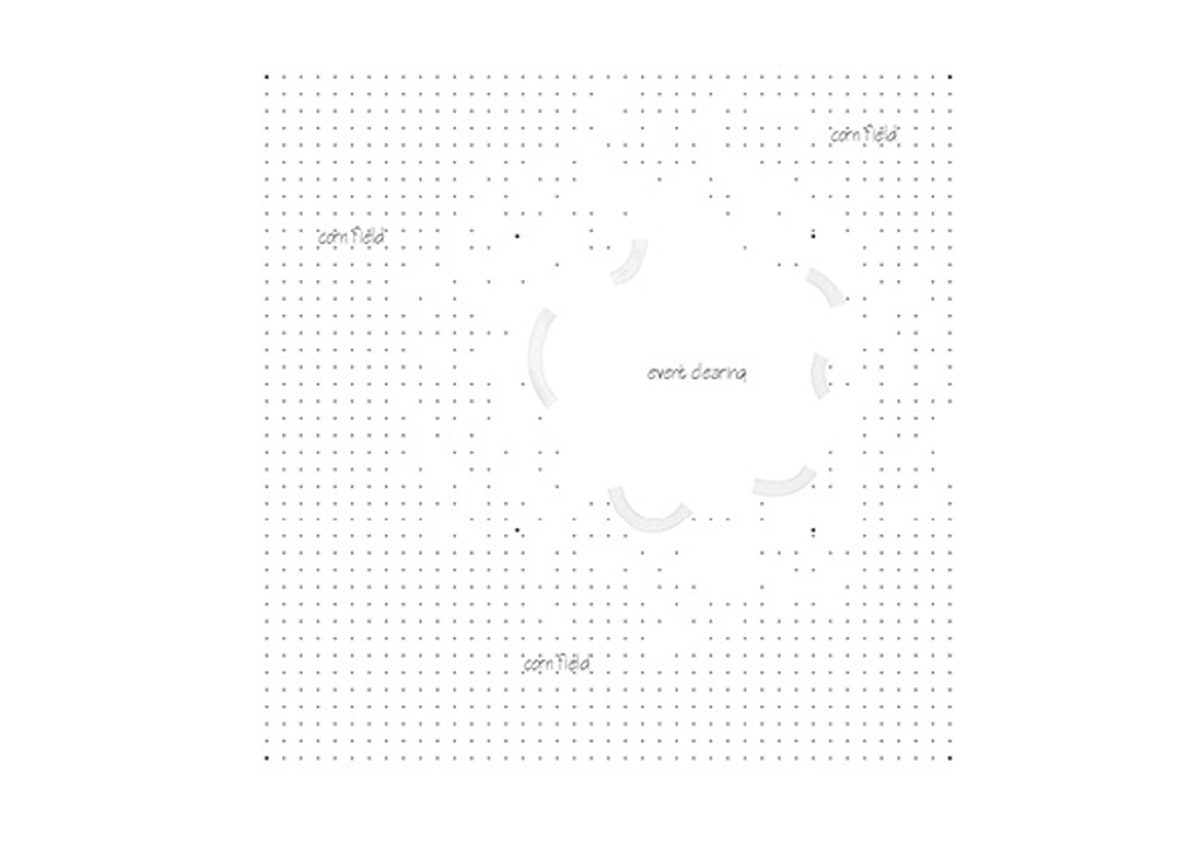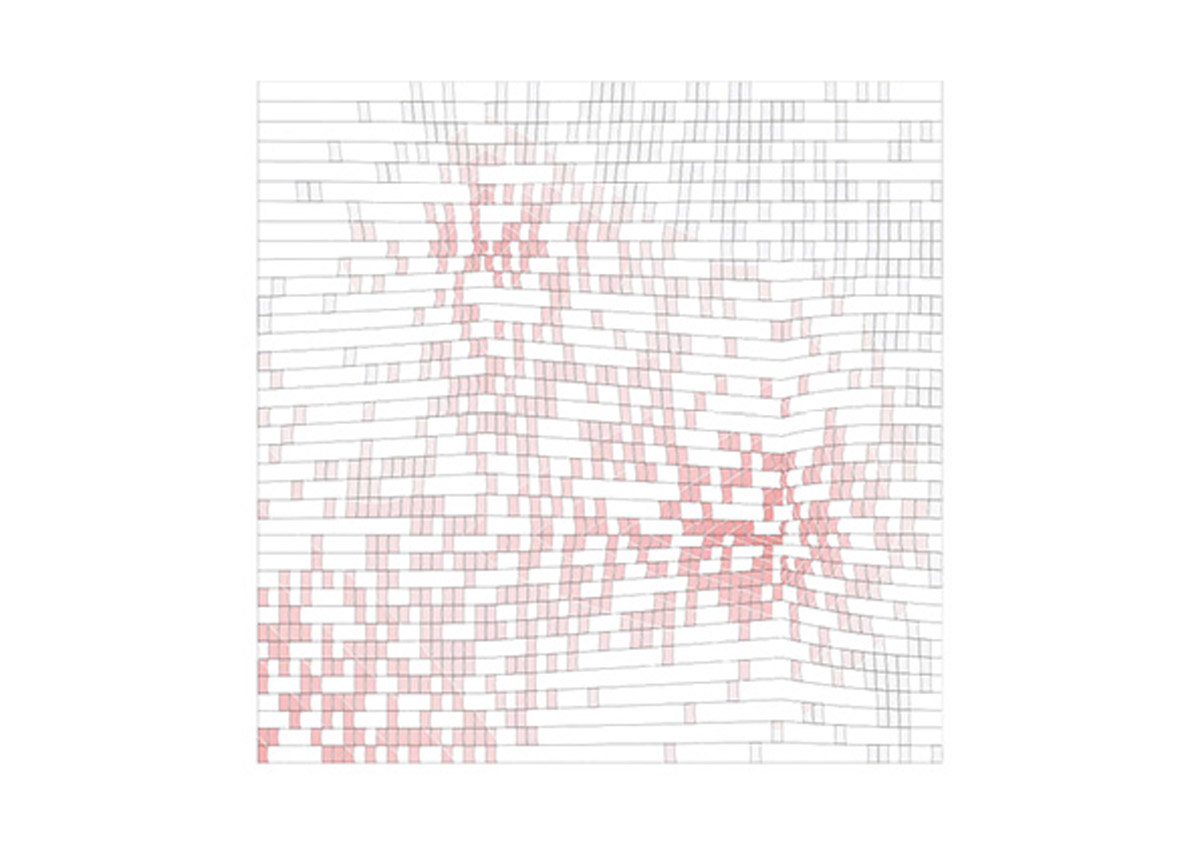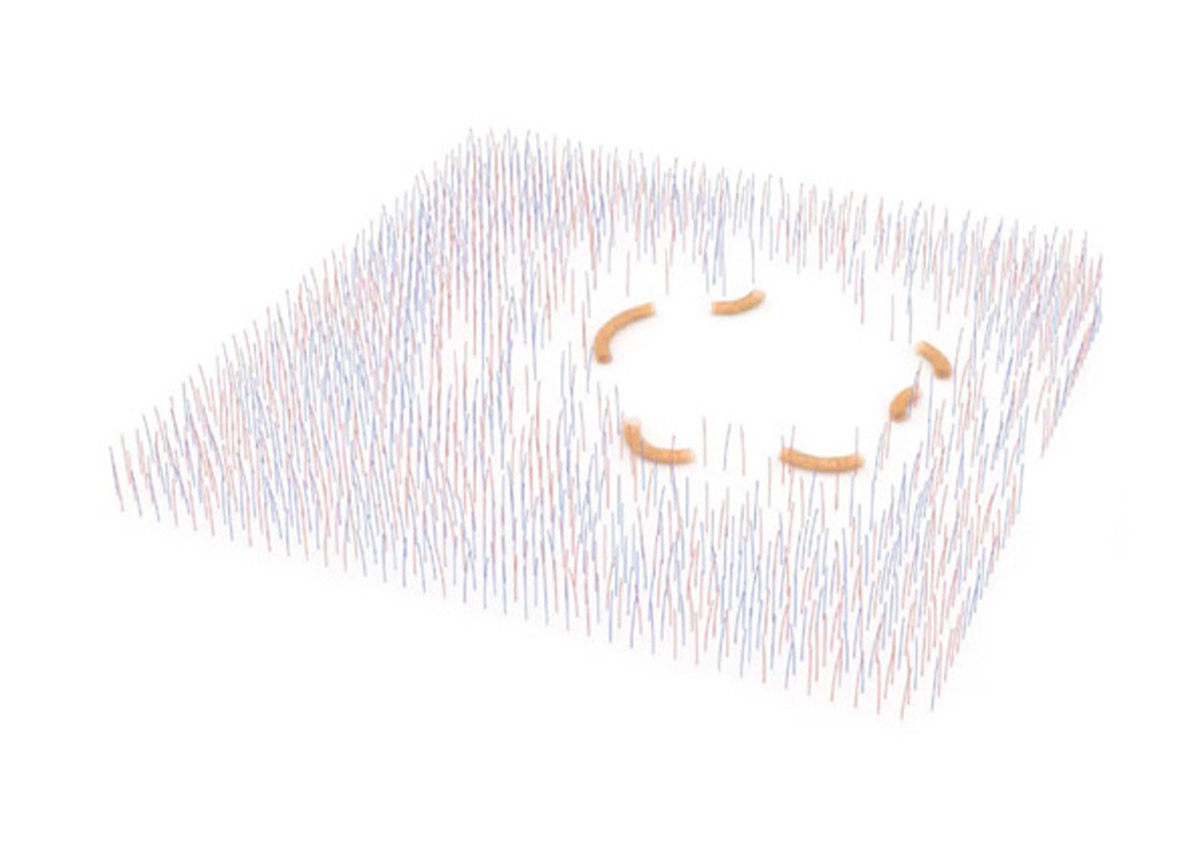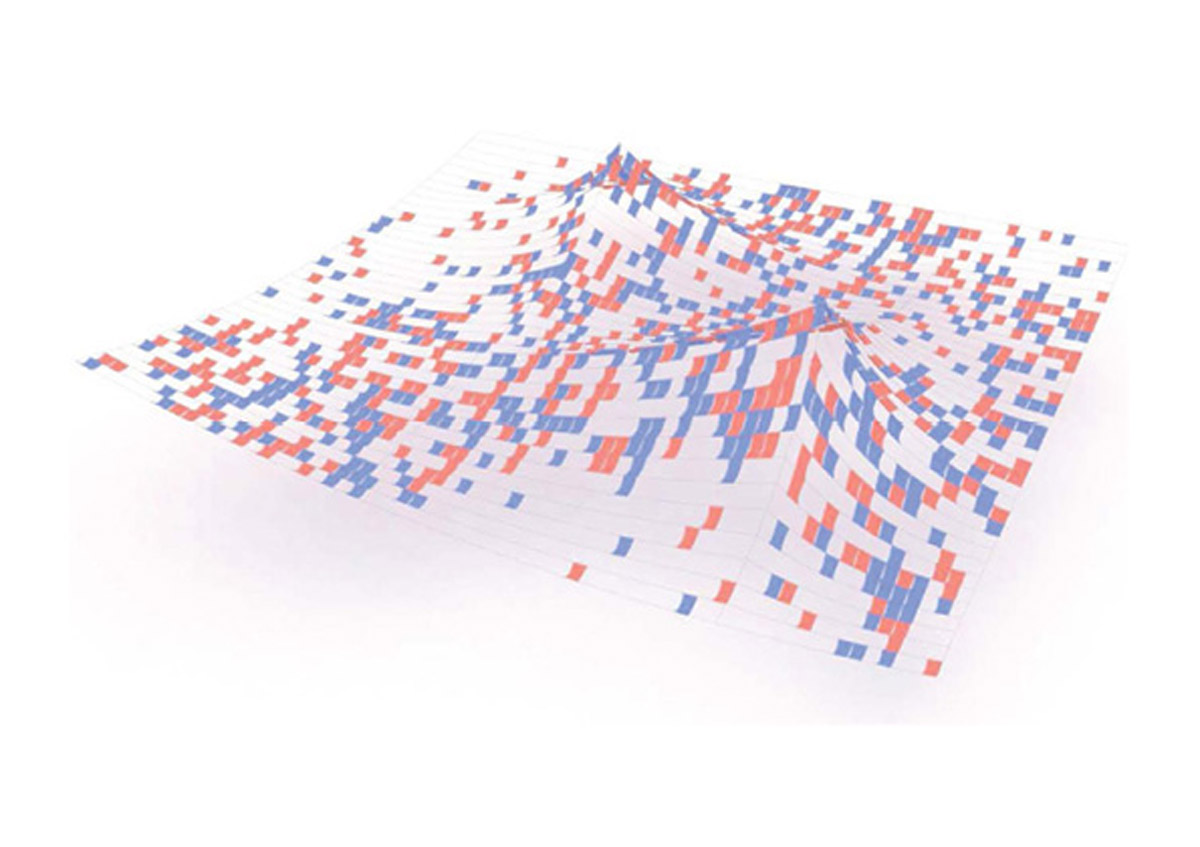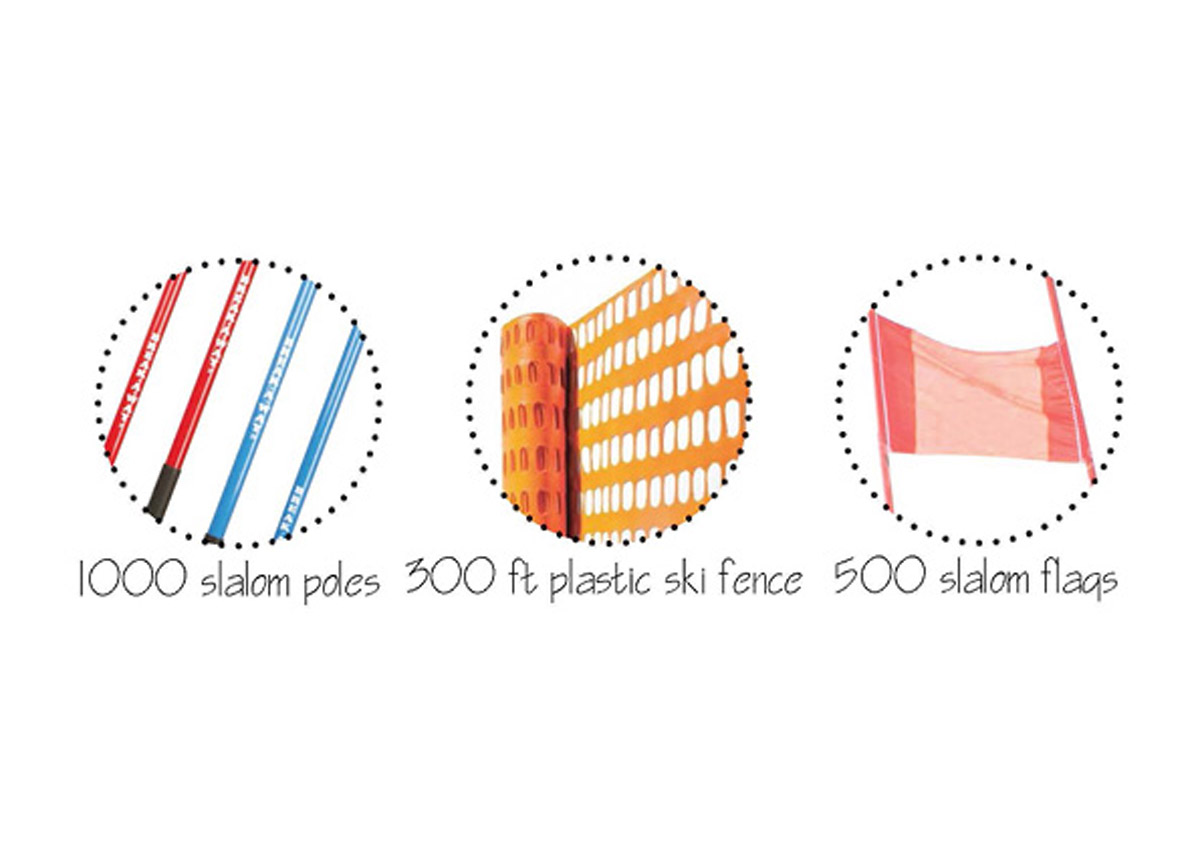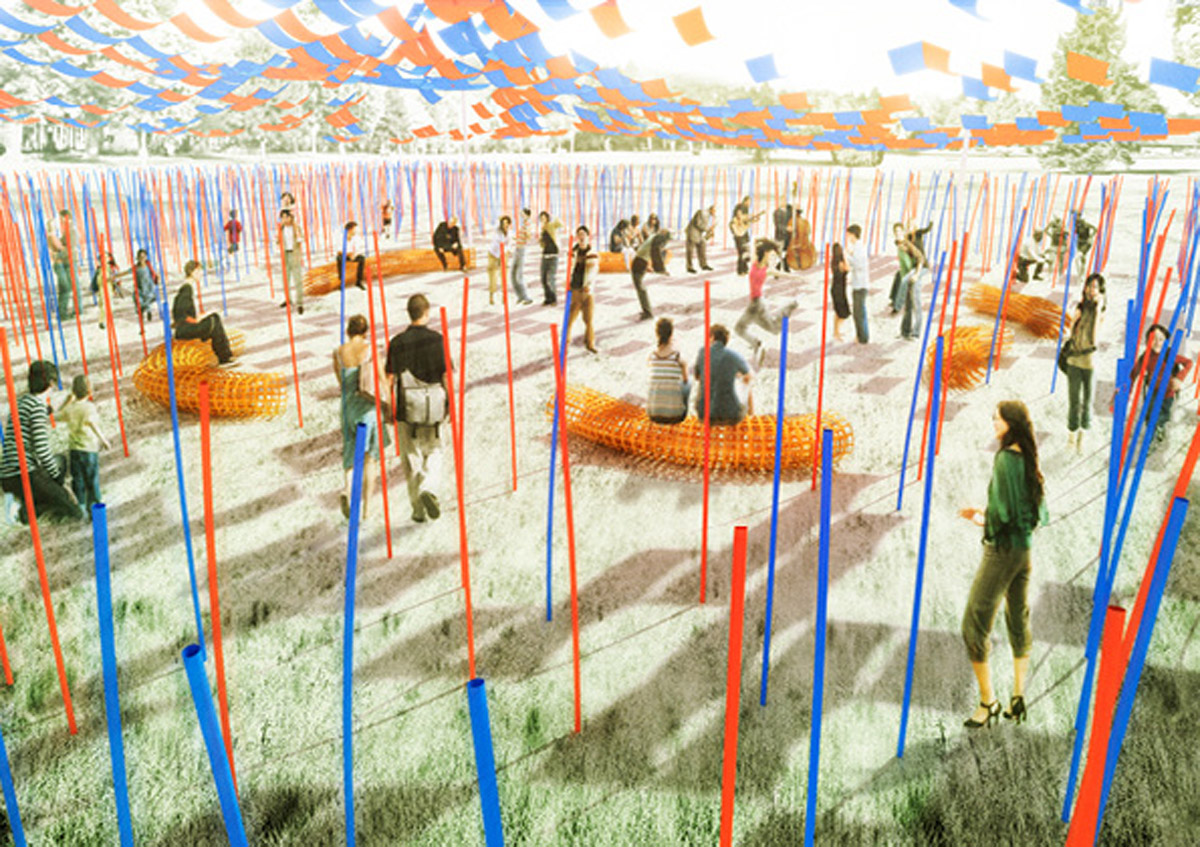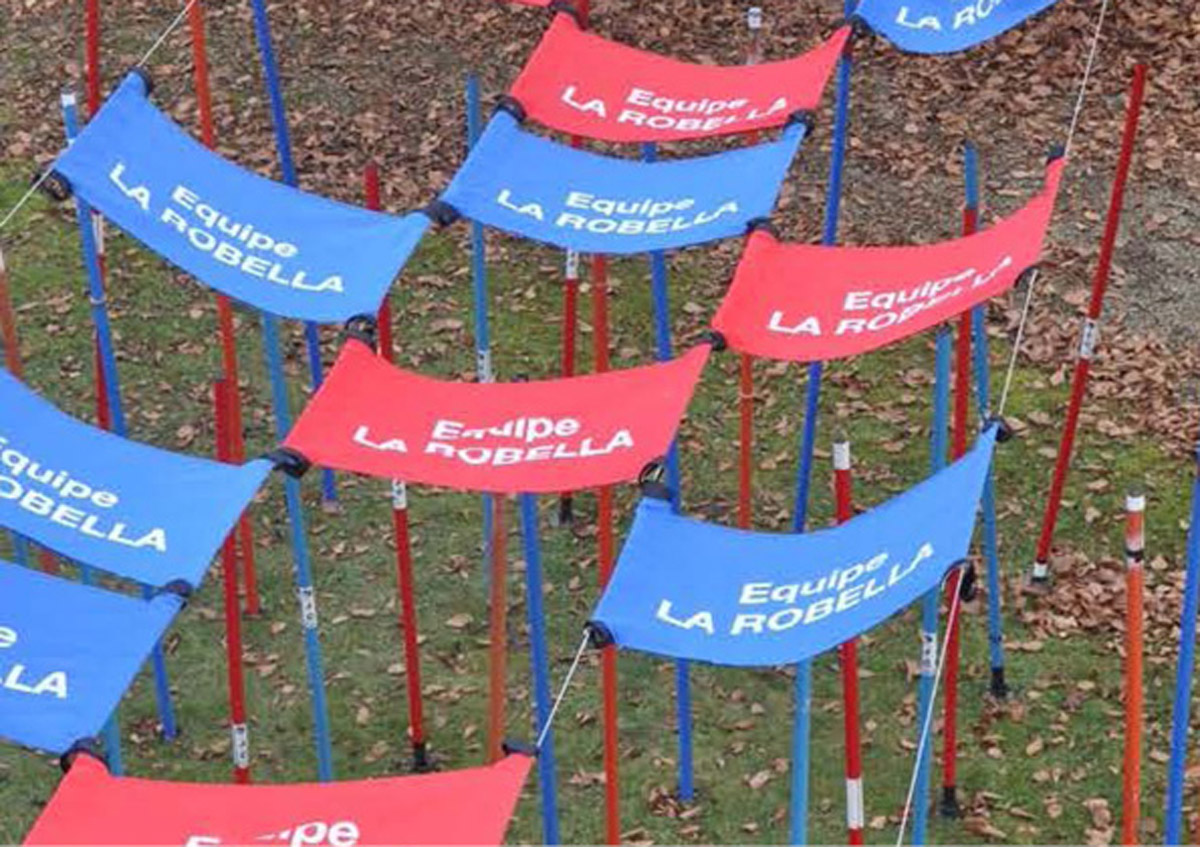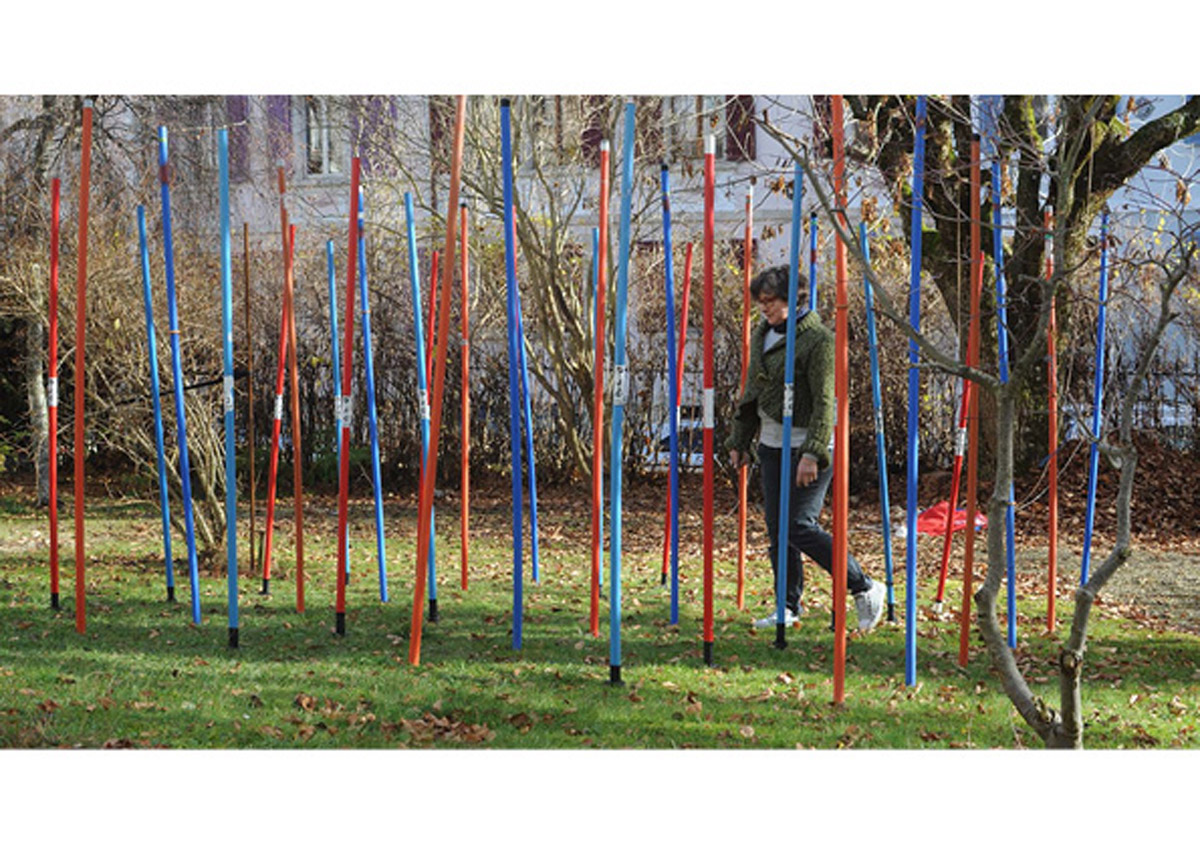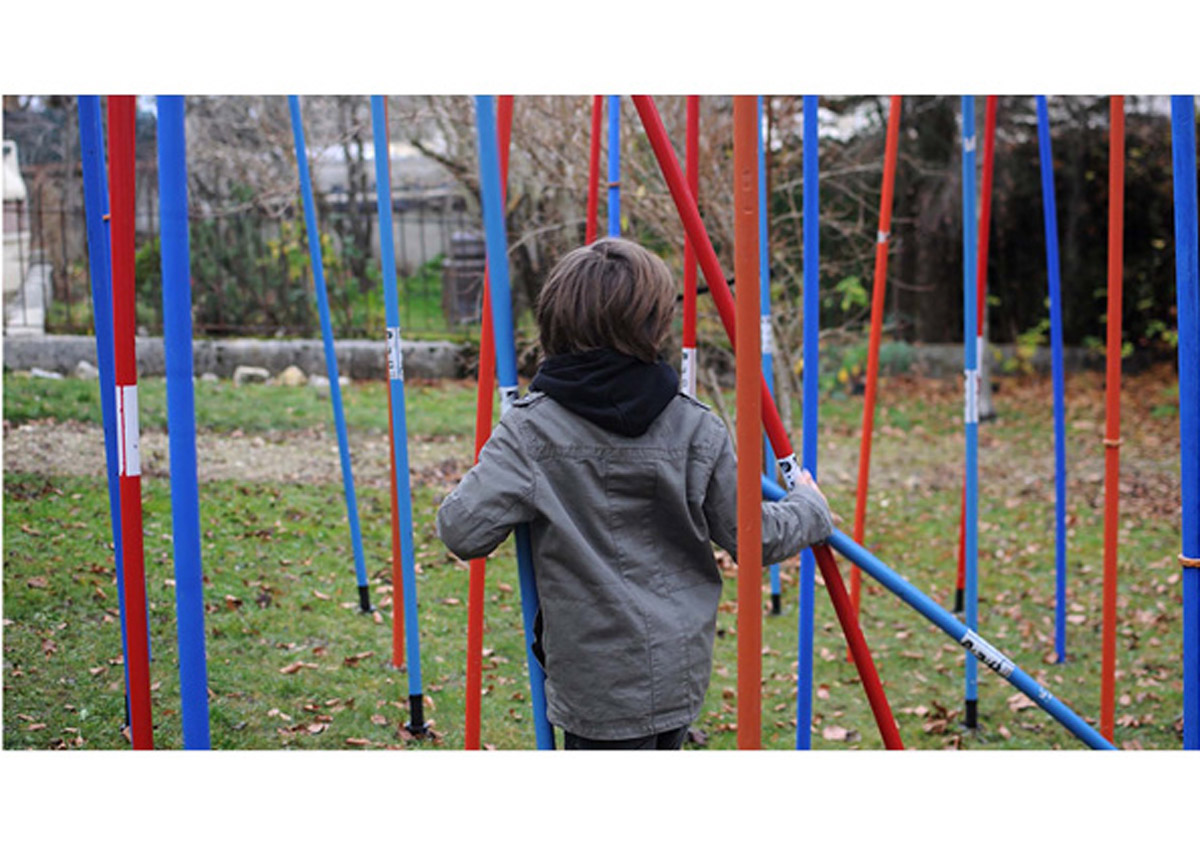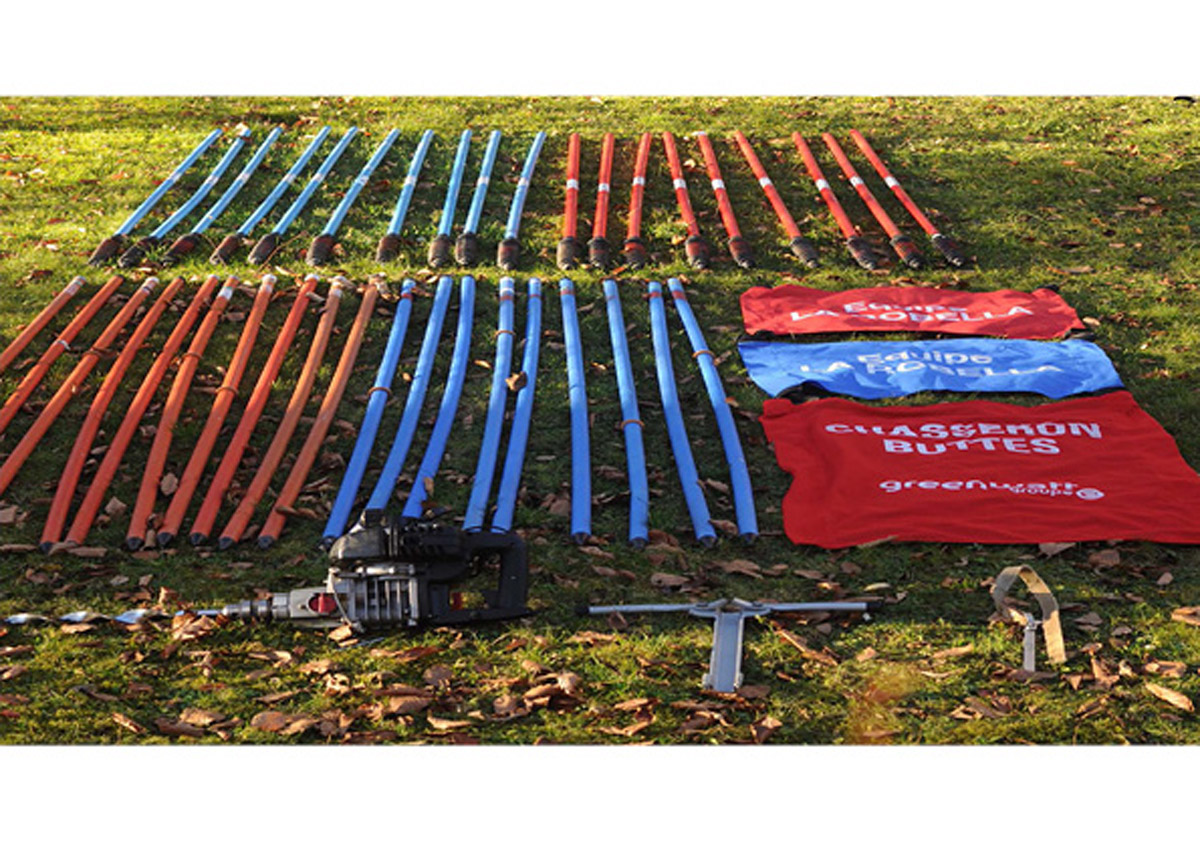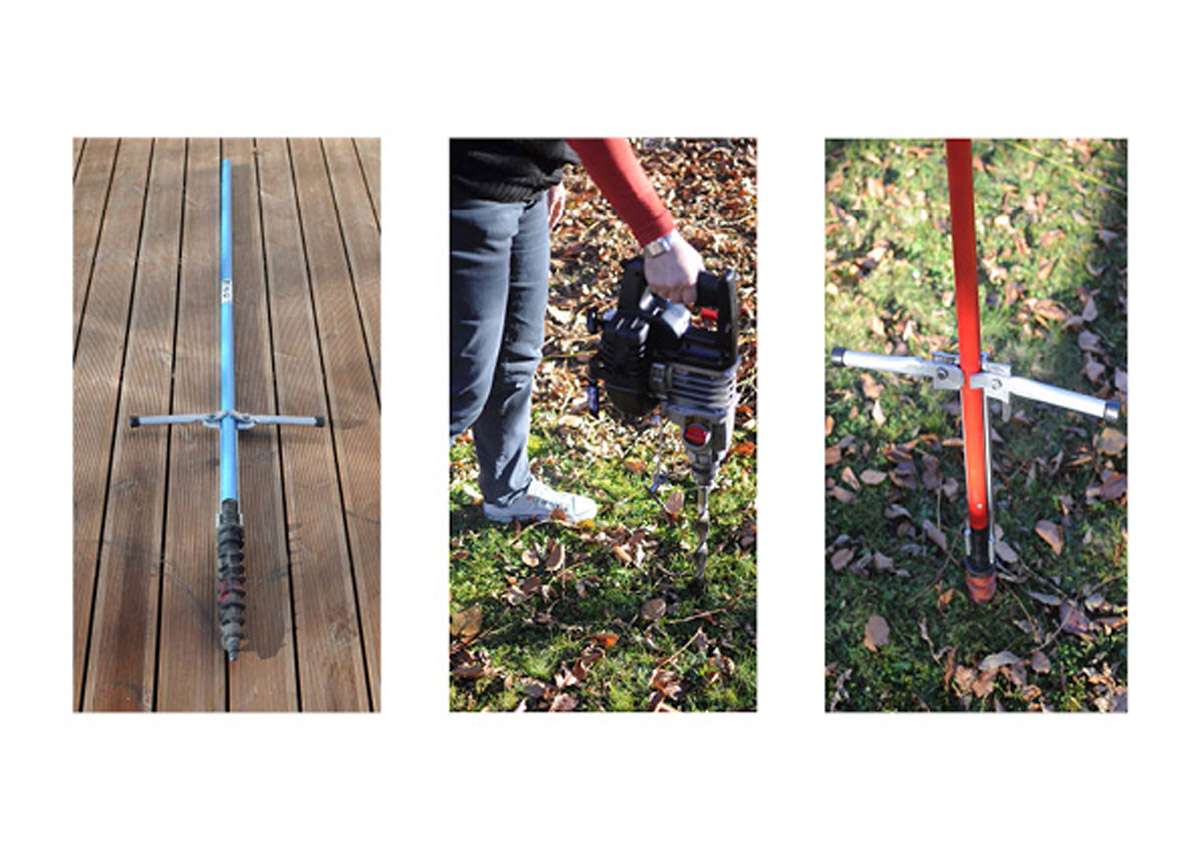The Cornfield, competition, New-york, usa, 2nd prize
Revisiting memories of childhood of play can be sparked by many elements: a smell, a sound, an image, a word … the “cornfield” pavilion offers a space for children and adults to transport themselves to the experience of being free in a large cornfield. High enough to host an entire generation of adults who want to relive their first hidden kiss, a terrain to play a game of hide and seek, nooks to enjoy a solo nap with just the sky, or twisting paths to race through.

The pavilion uses winter sports equipment rendered useless once the snow has melted. Slalom gates and security fences that are not needed during summer are borrowed from ski resorts located 2 hours’ drive from New York City. The pavilion is not about objects given a second subsidiary life, but rather being creative and attributing them different uses according to the time in the year and the location.
Each slalom gate is composed of two pickets and one flag, and both elements are used in the cornfield pavilion. The slalom posts create the body of the pavilion and the stems through which the visitors pass. The flexibly of these fiberglass stakes is highlighted by the wind and the flow of visitors filling the field with life. The flags create a roof of shading, rippling in the wind they reinforce the sensation of nature.
Filling a 100ft square space in the middle of a lawn, visitors can enter from all sides and meander in the mass, sheltered by the light canopy. In play, there are no specific directions to follow, no landmarks or signage to mark the way. However, after a time wandering in the field, the visitor will arrive in an unexpected open space with seats placed all around: this is the clearing. The Clearing is where events take place; where dance performances, music ensembles and lectures can happen with natural elements of wind and sun altering each unique experience. Is there any better place to listen to a concert than in a clearing of a corn field?
The core idea of the pavilion is to reuse as many materials as possible and to return them to their original function once the summer season has ended. This strategy reduces costs and minimizes waste. All that is solid melts into air: when fall arrives, the pavilion can be dismantled and all materials returned to their original owner and use. There is no loss, as all elements can be reused during winter, the environmental impact is minimal and yet the experience is multiplied.
Program:
Culturalphase:
CompetitionPartner:
m10 architectesDate:
5 September 2020



